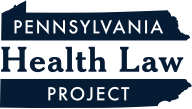ARP Funds Could Bring Much-Needed Relief to Direct Care Worker Shortage
At the end of 2021, the Centers for Medicare and Medicaid Services (CMS) approved Pennsylvania’s plan for spending the enhanced funding available for home and community-based services under the American Rescue Plan Act of 2021 (ARP). This paved the way for the Office of Long-Term Living (OLTL) to implement its plans for the increased funding, which includes three programs aimed at addressing the direct care workforce shortage in Pennsylvania: increasing rates for personal assistance services (PAS), providing grants to home care agencies for worker recruitment and retention activities, and developing a participant-directed worker registry.
Using ARP funds, OLTL increased payment rates by 8 percent for personal assistance services in Community HealthChoices (CHC), the OBRA Waiver and Act 150 beginning January 1, 2022. The goal of the rate increase is to raise wages in the hopes that more individuals will be attracted to and remain in direct care worker positions.
PAS Rate Increase
OLTL is requiring CHC managed care organizations (CHC-MCOs) to pay home care agencies and the fiscal management service (FMS) that manages payroll services for participant directed services at least the amounts OLTL pays in the OBRA waiver. The new OBRA waiver rates were published in the Pennsylvania bulletin and range from $19.32 to $21.52 per hour paid to agencies and $14.40 to $17.64 per hour to the FMS. These rates include overhead costs and do not reflect the hourly wage workers will receive, which is lower.
Because home care agencies negotiate rates directly with CHC-MCOs, the rates they will receive may vary greatly. Those agencies whose rates already were at or above the new rates being provided in the OBRA waiver may receive less than an 8 percent increase or no increase at all, while providers whose rates were on the lower end may see increases greater than 8 percent.
OLTL has acknowledged it is unable to require home care agencies to raise wages based on increased rates they receive from the MCOs. Instead OLTL is encouraging the agencies to do so. The extent to which direct care workers in CHC will reap the benefits of the 8 percent rate increase remains to be seen, as long as monitoring is conducted.
Home Care Agency Recruitment and Retention Grants
In response to home care agencies’ concerns about worker turnover and challenges attracting new workers, OLTL also has allocated $44 million of ARP funds for Strengthening the Workforce grants to personal assistance services and community integration providers. These funds, which are being sent to providers beginning in February, may only be used to address hiring and retention of workers through “sign on bonuses, retention payments, COVID-19 related leave benefits and paid time off, vaccination incentives, or the purchase of personal protective equipment and testing supplies.” Grants were calculated based on the number of service units billed during a nine-month period in 2020 and 2021 and ranged from less than fifty dollars for smaller or newer providers to over a million dollars for large providers. Participant directed workers who do not work for an agency are also receiving grants through PPL (Public Partnership Limited), the current FMS.
Participant-Directed Worker Registry
The final piece of OLTL’s ARP plan aimed at addressing worker shortages is the development of a registry through which people who use participant directed services and workers seeking employment under that model can find each other. The registry is still under development, so there is limited information on how it will work, although OLTL has made clear that registering will be voluntary. For participants who do not have an existing network of people willing and able to serve as a participant-directed worker, such a registry could help more people take advantage of participant direction.
